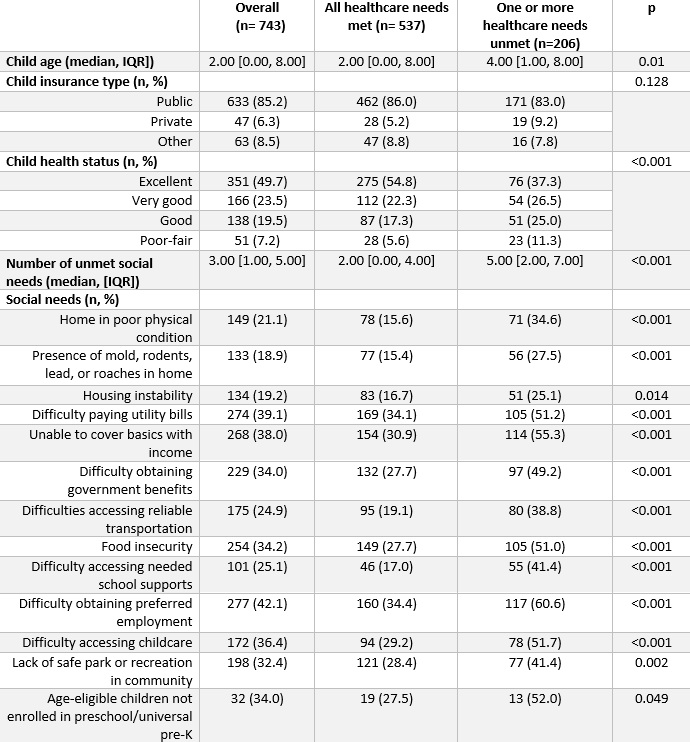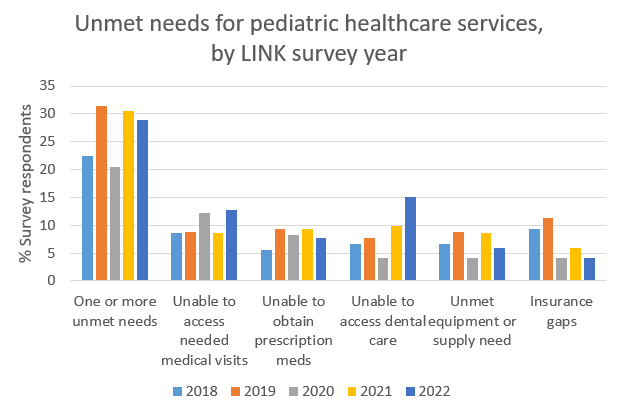Health Equity/Social Determinants of Health
Health Equity/Social Determinants of Health 3
540 - Assessing the relationship between unmet social needs and unmet healthcare needs in a pediatric population
Publication Number: 540.118
.jpg)
Mollie Evans, BA (she/her/hers)
Research Assistant
University Hospitals
Cleveland, Ohio, United States
Presenting Author(s)
Background:
Adults with unmet social needs are more likely to report that they also experience unmet healthcare needs, including issues with healthcare access. It is unclear whether this observed relationship between unmet social needs and unmet healthcare needs also applies to the pediatric population.
Objective: To describe the relationship between number of unmet social needs and unmet pediatric healthcare access needs.
Design/Methods: Semi structured telephone interviews were conducted annually in October with cross-sectional samples of parents of pediatric patients obtaining care 2018-2022 (47-64% response rate) at an urban academic pediatric practice in Cleveland, Ohio. Social and healthcare needs were assessed using a 5-point Likert scale (1-not at all true to 5-completely true). For analysis, healthcare access and social needs data were re-coded as dichotomous variables (met or unmet). The count of unmet social needs for each participant determined and coded as an ordinal variable “unmet social needs”. Bivariate analyses tested whether there were significant relationships among unmet healthcare needs and unmet social needs, and among unmet needs and child-level demographics. Logistic regression modeling was used to assess the relationship between unmet social needs and unmet healthcare needs, accounting for key covariates.
Results: Among parents of 743 pediatric patients interviewed (median child age 2 years, 48% female), 28% reported that their child had one or more unmet healthcare needs (unmet needs in mean= 1.61 of 5 domains – healthcare visits, dental visits, medications, medical equipment or supplies, health insurance). Parents most often reported inability to obtain all necessary healthcare visits (35.4% of patients with any unmet healthcare needs), followed by difficulty obtaining needed dental visits. The rate of parents reporting unmet dental needs has increased significantly over the study period (see Figure 1). Those with unmet healthcare needs reported greater unmet social needs than patients whose health care needs were met (median 5 vs. 2 of up to 12 topics, p< 0.001, see Table 1). Regression analyses indicated that for each additional unmet social need a pediatric patient faced, they had 1.34 times greater odds of having one or more unmet healthcare needs, taking into account the child’s age, health status, insurance type, and survey year (p = 0.0).
Conclusion(s): Pediatric patients are more likely to have unmet healthcare needs as their unmet social needs increase. It is important that pediatricians are aware of this relationship, as it could impact the access to care patients receive. 

